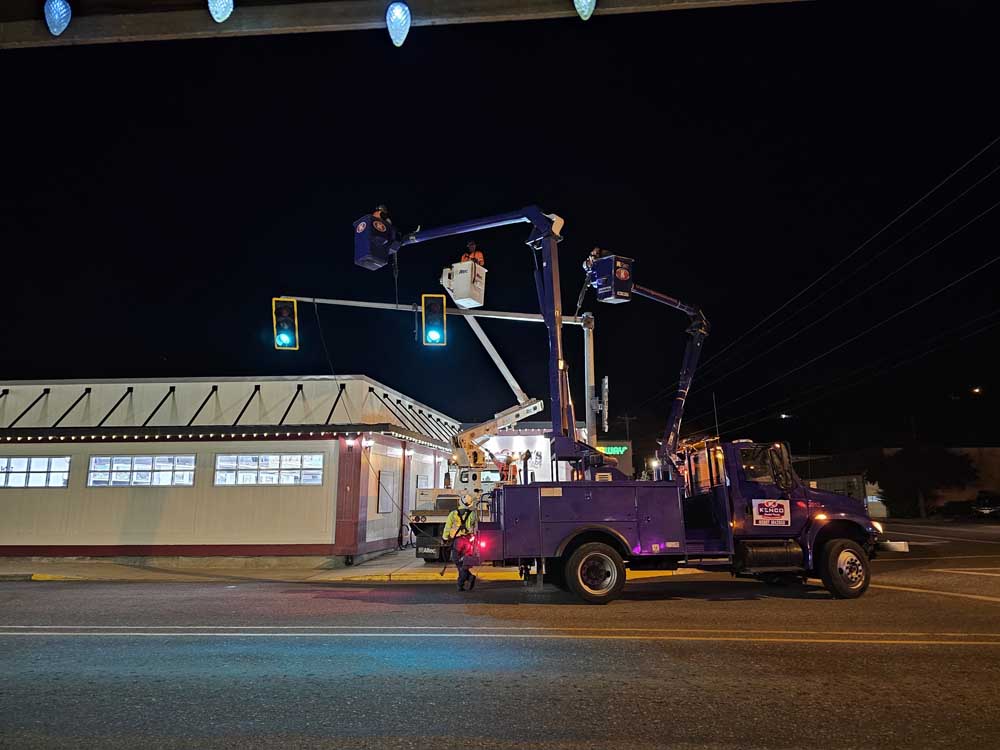Paving a new road for buffalo hunters
Published 4:00 pm Saturday, February 19, 2011

- Hunters from the Confederated Tribes of the Umatilla Indian Reservation traveled to Gardiner, Mont., on the north side of Yellowstone National Park to hunt buffalo. It was one of the first trips for the tribes in 130 years. When the tribal members used to make the trip, it would take two or three years. This year’s hunt took four days.
Five years ago, Jim Marsh had the honor of watching a buffalo hunt with Nez Perce tribesmen.
Marsh came to Gardiner, Mont., and saw other American Indians experience something his people, the Cayuse tribe of the Confederated Tribes of the Umatilla Indian Reservation, had not been a part of for more than a century.
Last weekend, Marsh was able to experience it for himself. He shot and killed a bull buffalo to bring back to his family and community.
His journey over those five years was more than just the distance between Oregon and Montana. Marsh pushed to assert his tribes right, and became a part of the politics in the process.
Every time Jim saw me over the last four years, it was, So Carl, hows the bison hunt coming? recalled Carl Scheeler, wildlife program manager for the CTUIRs department of natural resources.
Jim was very supportive and right there reminded me every time he saw me that it was important to him.
Scheeler said the CTUIR looked at the buffalo picture as far back as the 1990s, when the board of trustees briefly considered having a domestic herd. It soon decided against that, in favor of subsistence and cultural hunting.
Of course, the tribes history with buffalo go back to ancient times. The Treaty of 1855, which set up the Umatilla Indian Reservation, ensured the right to hunt buffalo along with other traditional foods such as salmon, deer and elk.
The 1855 treaty mentioned 24 times about buffalo,?Marsh said.
Getting Montana and other government agencies to recognize that right took years.
In 2008 Tamastslikt Cultural Institute put together a study of oral histories telling how Cayuse and other CTUIR tribes would go to buffalo.
Scheeler submitted this study to Montanas department of Fish Wildlife and Parks (MFWP) in December 2008. That same month the department said a collection of stories wasnt enough.
So Scheeler spearheaded a more in-depth study, completed in March 2009, and submitted that to MFWP.
In July 2010, the state finally agreed to the treaty right, though it used very careful language. It said it had no reason to doubt the treaty right, but did not corroborate the validity of the right.
Around that same time, after bugging Scheeler for years, the tribal leadership appointed Marsh to the Fish and Wildlife Commission. Right away, they put him on the buffalo hunt issue.
They handed me all the paperwork and said, You started, so you get to finish this out, Marsh said.
Even though hes only six months into his career, Marsh believes this is the highlight.
To actually be able to start something five years ago and see it out, not too many commissioners on my reservation at home got a task accomplished in such a fast manner,?Marsh said.
He rose to the challenge, representing the tribes at meetings it had with other tribes exercising their treaty rights.
The Nez Perce and Confederated Salish and Kootenai Tribes have exercised their rights since 2005.
This year the CTUIR and the Shoshone Bannock were added to the list.
Scheeler said other tribes had to go through processes similar to what the CTUIR did to get to exercise their rights and hunt buffalo.
Marsh, Scheeler and others attended two meetings this year in Missoula, Mont., coordinating with tribes and MFWP on who will hunt where and when and to make sure everyone was safe, Scheeler said.
In January, a family from the Umatilla Indian Reservation led the first hunt, taking four buffalo. Marsh and his party went up last weekend.
Were paving a new road and its an open and unclaimed one right now, Marsh said. Only a few people make the hunting trip. I hope in the next couple years we see more tribal members. That was my goal.





